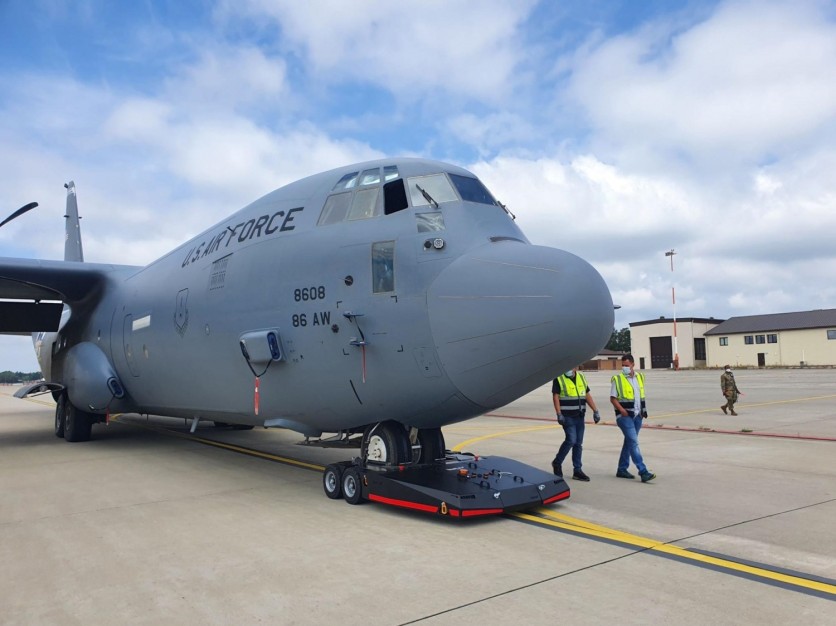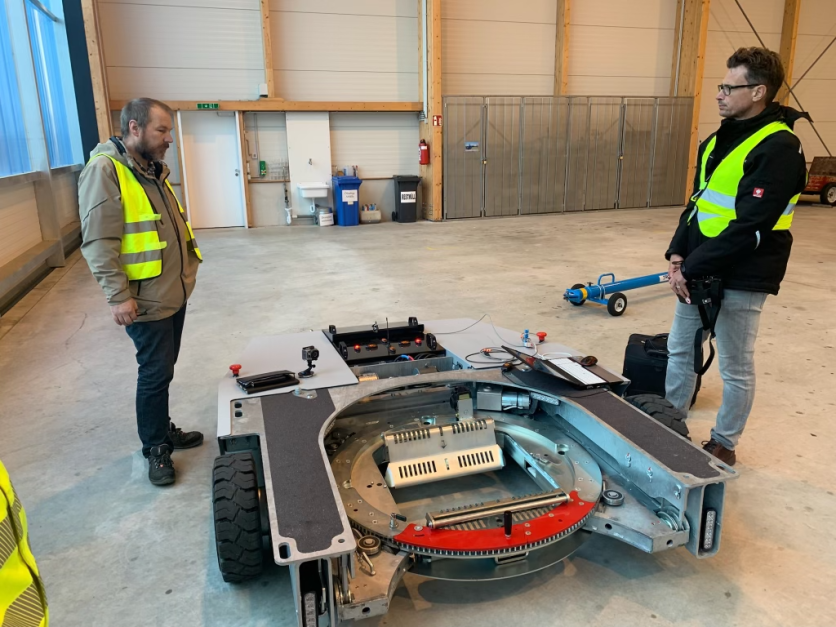
The aviation industry is vast and varied.
For those of us who may not know, we can't have aircraft without tug vehicles.
For the uninitiated, tug vehicles are what maneuver a plane around on the tarmac, in a hangar, or on an aircraft carrier. Aircraft tugs, which look small compared to planes, are low to the ground. They have powerful engines that can push or pull an aircraft that weighs thousands of pounds. They push aircraft from airport gates to the tarmac or to the taxiway for takeoff.
Aircraft tugs started in the 1940s, during the Second World War, and 1950s, with one French company called TracMa trailblazing the industry. American company Eagle Tugs saw their rise in the 1960s, developing the first bobtail cargo tractor based on Ford motors technology to push and pull planes with a driver behind the wheel, steering the tug vehicle. It wasn't until the 1980s that TracMa developed the first towbarless tug, which sped up the process for aircraft that could maneuver in a more detailed manner.
There has been a serious evolution with these vehicles over the years, and recent developments have allowed these tug vehicles to be autonomous and battery-powered. Now, tugs are becoming more efficient, evolving towards driverless electric options like those offered by the German company TowFLEXX.
Björn Rösch, the Head of Software at TowFLEXX, is an expert on autonomous tug vehicles.
Why do tug vehicles need to evolve?
For years, tug vehicles have been large, cumbersome vehicles that take up a lot of space and work with imprecise movements. This "is a problem," notes Rösch, "as the equipment leads to inefficiencies and operational challenges."
With TowFLEXX, Rösch is at the forefront of cutting-edge tug vehicle design, with compact and fully electric, remote-controlled tug vehicles. The company is helping to revolutionize the way tug vehicles operate with TowFLEXX's patented 360° turntable technology and an ability to operate in tight spaces with ease. "This not only increases the efficiency of the aircraft movement and parking, but leads to 40 percent more space in the hangars," states Rösch.
These tug vehicles also play a huge part in keeping airports safe for workers, pilots, and passengers. By reducing the worrisome issue of human error, automated tug vehicles allow for precise movements and increased efficiency when operated remotely, as TowFLEXX is helping to mitigate the risk involved with an aircraft's movement.

The Next Step in the Evolution of Autonomous Tug Vehicles
With the increased use of artificial intelligence and an eye towards autonomous vehicles under Rösch's guidance, TowFLEXX looks to continue the evolution of tug vehicles.
Recently, under the guidance and direction of Rösch, TowFLEXX has launched a next-generation prototype TF5 vehicle with their revolutionary system, the Remote Controlled Capturing System. Rösch himself was in charge of the research and development, as well as leading all software engineering efforts to help adapt the commercially proven baseline TF5 vehicle.
AI plays an important role in all of this. AI is not replacing but rather augmenting the work done by actual humans, he says. It is being done in a way that helps to create a better product that helps to reduce mitigating factors, notes Rösch.
For one, AI can help to optimize battery usage, which leads to more efficient vehicles. AI can predict battery health, optimize charging methods, notify workers when the battery is low, and manage battery operations to ensure optimal longevity for each tug vehicle. "The AI algorithms we use help optimize battery usage by predicting energy consumption patterns and adjusting power distribution accordingly," explains Rösch. The outcome? Extended battery life, reduced downtime, and enhanced reliability—all positive results.
AI and machine learning will also play a huge role in predictive maintenance, something crucial in the safety aspect of tug vehicles and extending their lifespans, Rösch believes. This assures that all will be key in enabling the next generation of tug vehicles to be(come) autonomous. "In the future, these battery powered autonomous tug vehicles will have many benefits," he said, "all of which will help reduce human intervention and thus error, and as such, diminishes the risk of accidents."
The Future of Autonomous Tug Vehicles for Aircraft
TowFLEXX's autonomous battery-powered tug vehicles represent the future of ground handling at both airports and military bases. It is Rösch's staunch belief that reducing the impact of human error is crucial in elevating safety in the maneuvering of aircraft.
Given the current climate of ground handling and maneuvering aircraft, there are bound to be towing mishaps that lead to costly repairs and, as a result, delays. However, as Rösch points out, the use of autonomous tug vehicles will greatly reduce those factors. "Autonomous vehicles do not have the same physical limitations that humans have," says Rösch. "They can work 24/7, no matter the weather conditions." This will further help reduce operational costs, as will the elimination of fossil fuels to power them, as they will rely solely on batteries. Reducing operating costs as well as their carbon footprint is a win-win in Rösch's mind.
These zero-emission tugs will help negate the need for diesel-powered tug machines. "As the aviation industry faces growing pressure to adopt greener practices, battery-powered vehicles are a critical step toward more sustainable and environmentally friendly operations," he said. This will, in turn, help keep up with ever-increasing compliance laws.

Targeting Commercial Airports by 2035
While tug vehicles have evolved greatly in recent years, the next step is implementing them at commercial airports. In fact, several commercial airports are already starting to use battery-powered tug vehicles. Rösch believes that with the increasing environmental regulations, coupled with the aviation industry's commitment to sustainability, we will see the adoption of automated tug vehicles at commercial airports over the next five to 10 years.
With most major airports transitioning to electric, automated tug vehicles, it will be common ground by the mid-2030s.
"Autonomy is the way of the future, it helps to cut costs and increase safety measures," says Rösch.
While autonomous tugs are becoming more common, automated aircraft will not follow suit, said Rösch. "In terms of safety, there is a difference between an airplane and a person," he said. "Personal injury is more expensive. Accordingly, you have to go to greater expense for this, or you have a pilot. In the long term, it's only a question of time. TowFLEXX will be prepared."
ⓒ 2025 TECHTIMES.com All rights reserved. Do not reproduce without permission.




